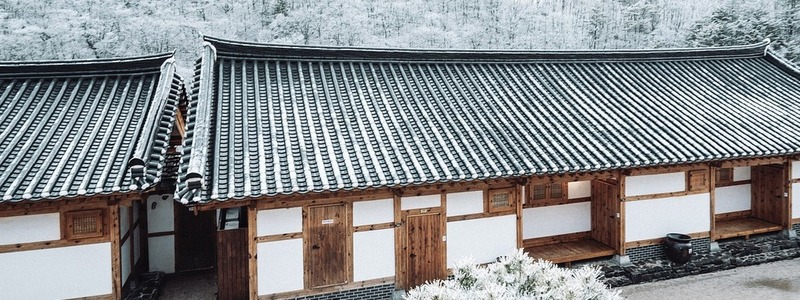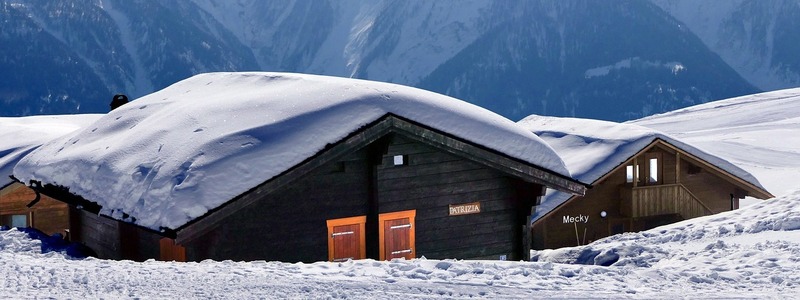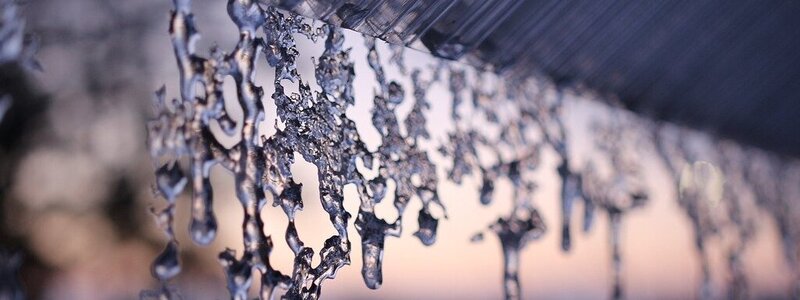
How to Prepare Your Roof for Winter
As winter approaches, it is crucial to ensure your roof is adequately prepared to withstand harsh weather conditions. Properly winterizing your roof protects your home and helps maintain its structural integrity.
In this article, we will discuss key points on how to prepare your roof for winter, including tips for winterizing, protecting your roof from snow, and the best temperature for roof repairs. Considering these guidelines will help you ensure a well-maintained and durable roof throughout the winter months.
Preparing Your Roof in The Fall
Don’t wait for freezing weather. Take action when the fall arrives. Add the following to the checklist and contact a professional team to assist you with winterizing your roof:
- Inspect the roof for damage
- Clear debris and clean gutters
- Check insulation and ventilation
- Seal air leaks
- Schedule a repair or replacement if needed

Conduct a Roof Inspection
Before winter arrives, perform at least a thorough inspection of your roof from the ground to identify any existing or potential issues. Look for obvious signs of damage, such as missing or damaged shingles, cracks, or loose flashing. Inspect the condition of your roof’s surface and pay attention to any areas of concern.
Identifying and addressing problems early on can prevent further damage during winter storms.
If you are unsure about conducting the inspection yourself, get in touch with a professional roofing contractor like B&M Roofing that can provide expert guidance and ensure a comprehensive evaluation. While inspecting your roof from the ground can provide a general overview, it is advisable to hire a professional for a more comprehensive assessment.
We have the expertise to identify potential issues that may go unnoticed by the untrained eye. By addressing these issues promptly, you can prevent further damage during winter storms and ensure the longevity of your roof.
Trim the Trees
If you have large trees around your house, plan to trim any branches that hang over your roof. During the winter, snow can accumulate on those branches, potentially causing them to break and crash onto your roof. Consider hiring a landscaping company to take care of any large branches you cannot safely reach. Trimming the trees will reduce the risk of damage and ensure the safety of your roof during winter storms
Clean and Clear Your Roof
Clearing debris from your roof is essential to prevent clogged gutters and potential water damage. If you can do it safely, remove leaves, twigs, and other debris that may have accumulated on your roof. Clean gutters and downspouts to ensure proper water drainage. Clogged gutters can lead to ice dams, which occur when melted snow freezes and forms a barrier, preventing water from flowing off the roof. Ice dams can cause water to back up under the shingles and potentially seep into your home, resulting in leaks and water damage.
Regular maintenance and cleaning will help prevent these issues and keep your roof functioning optimally.
Insulate and Ventilate Your Attic
Proper insulation and ventilation in your attic play a significant role in maintaining a warm and energy-efficient home during winter. Insufficient insulation can lead to heat loss, which can contribute to the formation of ice dams on the roof.
Check the insulation levels in your attic and consider adding more if necessary. Adequate insulation helps retain heat within your home, reducing the strain on your heating system and minimizing the risk of ice dams.
Furthermore, ensure that your attic is adequately ventilated to regulate temperature and humidity levels. Proper ventilation helps prevent excess moisture buildup, which can lead to mold growth and potential roof damage.
Seal Air Leaks
Air leaks in your home can contribute to heat loss and increase your energy bills. Inspect your roof and attic for gaps, cracks, or openings where warm air can escape.
Common areas for air leaks include around chimneys, vents, and attic hatches. Seal these areas with weatherstripping, caulk, or spray foam insulation to improve energy efficiency and reduce the chances of ice dam formation on your roof.
By sealing air leaks, you create a more airtight and well-insulated environment within your home, helping keep it warm and comfortable during winter.
Consider Roof Repair or Replacement
If your roof has significant damage or is nearing the end of its lifespan, it may be wise to consider repairs or replacement before winter arrives. Cold weather can make roofing tasks more challenging, and some roofing materials have temperature limitations for installation. If there are visible signs of damage, such as missing or damaged shingles, leaks, or sagging areas, consult with a professional roofing contractor to determine the best course of action.
At B&M Roofing, we can assess the condition of your roof and provide recommendations for repairs or replacement based on your specific situation.
How to Protect Your Roof from Snow
Heavy snowfall can stress your roof significantly, potentially leading to structural damage. To protect your roof from the weight of accumulated snow, consider installing snow guards. Snow guards are devices that are strategically placed on your roof to prevent large amounts of snow from sliding off all at once. By holding the snow in place, they reduce the risk of injury from falling snow and minimize the strain on your roof.
Snow guards also allow the snow to melt and drain more gradually, preventing the formation of ice dams.

Ideal Temperature for Roof Repairs or Replacement
Roofing materials have specific temperature requirements for installation. Cold temperatures can make shingles and other materials brittle, making them more prone to damage during installation. It is generally recommended to avoid roofing tasks when the temperature falls below freezing (32 degrees).
Professionals have the expertise and knowledge to determine the best temperature and weather conditions for successful roof repairs or replacement. Do not, however, wait for everything to freeze before you call.
Why Not Do It Myself?
There are several reasons not to attempt DIY roof inspections and repairs. DIY inspections and repairs are very unlikely to save you money. They will surely leave issues unaddressed, your roof vulnerable to the elements and may shorten your roof’s lifespan, resulting in an urgent and premature need for roof replacement.
Risk
Walking around on your roof can be extremely dangerous, even for experienced individuals. Professional roofing contractors undergo countless hours of safety training, use special safety equipment to minimize risks, and still, accidents happen. No amount of money saved is worth risking your life.
Don’t hesitate to reach out to our expert team; we have the training and experience to inspect and repair your roof correctly. We know how to spot damage and how to make appropriate repairs to save you from urgently having to pay for things that could be avoided.
Material Warranty
Moreover, manufacturers of roofing materials require a licensed roofing contractor to install their materials for said material to qualify for their warranty. On the off chance you were to tackle your DIY roof repair successfully, you’ll have missed out on these warranties. If and when your repairs go bad, you’ll be stuck paying for more materials or, worse, for a completely new roof.
DIY roof repair isn’t worth the accompanying headache. At B&M Roofing, you get a licensed roofing contractor to perform biannual roof inspections safely.
Allow trained eyes to spot unseen wear and tear. Rest peacefully, knowing that your roof is in good shape as it endures season after season. The peace of mind from a qualified licensed contractor’s genuine interest in your well-being is abundant.
What Roof can Withstand Extreme Weather?
Some roofs fit into snowy conditions in Colorado more than others.
- Metal roofs can handle heavy snow and allow it to slide off easily.
- Cement roofs, although less common due to their cost, offer great protection against snow. They are durable and can resist moisture.
- Slate roofs are both beautiful and strong, capable of withstanding snow and ice. However, slate is expensive.
Overall, these roofs provide durability and resilience against the snowy weather conditions in Colorado.

Inspect and Prepare
Preparing your roof for winter is essential for its longevity and for protecting your home from the elements. Adhering to temperature guidelines while planning roofing tasks ensures optimal results. With proper preparation, your roof will withstand the winter season, providing you with peace of mind and a comfortable living environment.
Our professional team has the experience to inspect, repair and replace your roof. Contact us to discuss how we can help you, schedule a convenient time to visit your house, and allow our team to give you customized solutions.
B&M Roofing Colorado’s Most Trusted
If you think it’s time to replace your roof, regardless of the size of your home, this is an important decision that you should not rush into. You need to make sure you choose the right roofing installation company, that the roof is installed correctly and that the weather cooperates during the replacement process.
For more information about roof maintenance, repair, or replacement. Call us at 303-816-0068 or fill out a contact form.




































